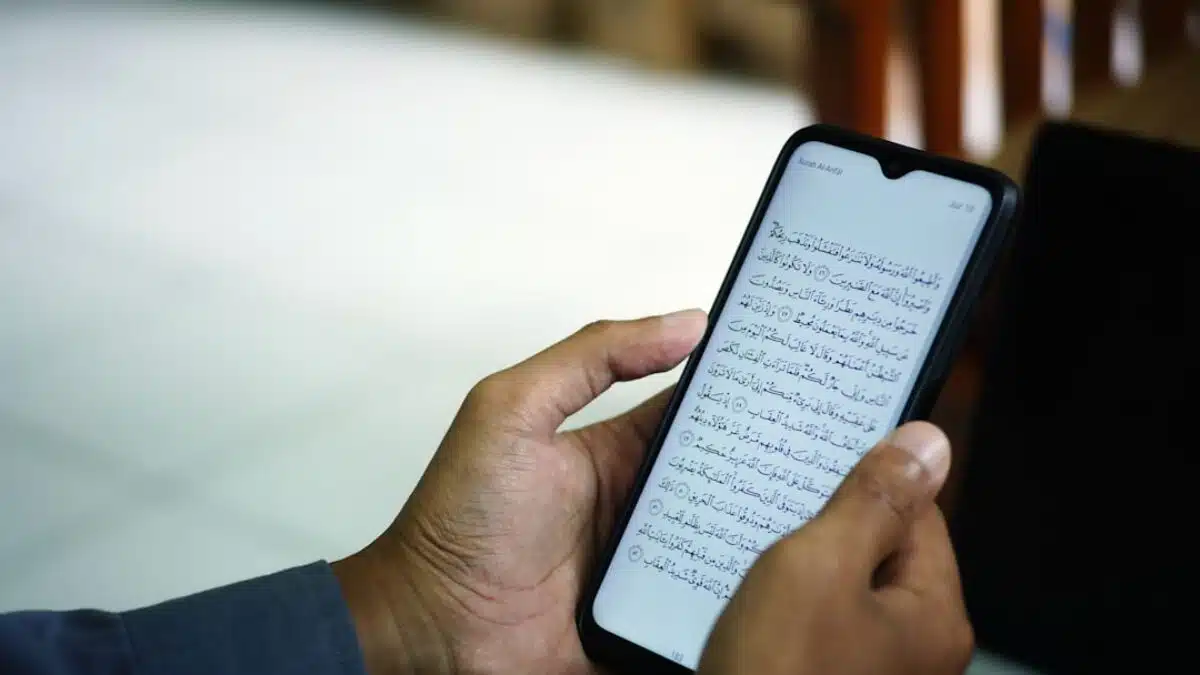Reciting the Qur’an is a spiritual milestone for every Muslim, yet for the majority of non-Arabic speakers the journey can feel daunting. Pronunciation hurdles, unfamiliar phonetics, and the pressure to perfect every letter often create anxiety instead of connection. The good news is that fluency is not an innate gift reserved for Arabs; it is a skill that can be mastered systematically by anyone willing to apply proven methods. This article distills the most effective, field-tested advice from seasoned teachers, huffadh, and Arabic linguists into seven practical tips. Follow them consistently and you will notice measurable progress—not in years, but in weeks.
Understanding Qur’anic Fluency for Non-Arabic Speakers
Before diving into the tips, it is essential to define what “fluency” means in the context of Qur’anic recitation. Fluency here is not conversational Arabic proficiency; rather, it denotes the ability to read the Qur’anic text accurately, smoothly, and with confidence, while observing the rules of tajwīd that safeguard meaning. Accuracy, rhythm, and spiritual presence form the triad of fluent recitation.
Why Non-Arabic Speakers Face Unique Challenges
- Phonemic Gaps: Arabic contains letters (e.g., ḥā, ṭā, ẓā) that do not exist in most other languages.
- Diacritical Dependency: Learners often rely on full vowelling, slowing down the transition to the unvowelled muṣḥaf.
- Scarcity of Qualified Feedback: Without native teachers, mispronunciations fossilize quickly.
The Science Behind Rapid Skill Acquisition
Modern second-language acquisition research shows that micro-practice, spaced repetition, and immediate feedback accelerate mastery. By leveraging these principles, non-Arabic speakers can compress years of conventional study into months of focused training.
Key Components of Qur’anic Fluency
Fluency rests on four pillars: correct articulation (makharij), phonetic rules (ṣifāt), rhythm (tajwīd), and memorized vocabulary (mufradāt). Each pillar is trainable, provided we isolate it and drill deliberately.
1. Master the Arabic Alphabet through Muscle Memory
Isolate Each Makhraj
Start by learning the 17 points of articulation. Use a mirror and record yourself to verify tongue, lip, and throat positions. A simple daily drill is to pronounce each letter ten times in its four vowel forms (fatḥah, ḍammah, kasrah, sukū). This takes less than twelve minutes but yields enormous clarity.
Build Muscle Memory with “Letter Chains”
- Choose a letter, e.g., ط.
- Chain it with every other letter: طب، طت، طث، طج… until you have read 28 mini-combinations.
- Repeat the chain forward and backward to engrain reflex pathways.
2. Internalize Tajwīd Rules as Patterns, Not Theory
Traditional classes often overwhelm students with jargon. Instead, memorize “sound patterns”. For instance, the rule of idghām (merging) can be remembered by the nasal “nnn” sound disappearing into the following letter. Create flashcards with color coding: green for idghām, red for iqlāb, blue for ikhfa’. A weekly 15-minute review is sufficient if cards are engineered for active recall.
3. Leverage the “Chunk-and-Chain” Method for Smoothness
Neuroscience confirms that the brain reads in chunks (2–4 words) rather than individual letters. Apply this to Qur’anic reading:
- Day 1: Read āyah 1:1 as “Bismillāhir-raḥmānir-raḥeem” in one breath.
- Day 2: Add āyah 1:2 and chain it without stopping: “Al-ḥamdu lillāhi rabbil-‘ālamī”.
- By Day 7, you should read the entire Sūrah al-Fātiḥah fluidly.
Record yourself daily and measure “words per minute” and “errors per 100 words”. Progress becomes tangible.
4. Use Phonetic Transcription as a Scaffolding Tool
For the first 30 days, write tricky verses in Latin letters below the Arabic line, but use IPA symbols instead of ad-hoc spellings. This prevents fossilized mispronunciations. After 30 days, transition to the Arabic-only muṣḥaf. An example:
| Arabic | IPA Transcription |
|---|---|
| ٱلرَّحْمَـٰنِ | ar-raħ.maː.ni |
| ٱلرَّحِيمِ | ar-ra.hiː.mi |
5. Schedule Micro-Recitations Throughout the Day
Instead of one 60-minute nightly session, break recitation into micro-sessions of 3–5 minutes tied to daily triggers:
- After Fajr: 1 āyah repeated 10 times.
- Before lunch: review one rule of tajwīd.
- After Maghrib: recite the day’s āyah to a family member or voice-note.
These brief, distributed practices yield superior retention compared to massed practice.
6. Harness Technology for Immediate Feedback
Free apps such as Tarteel AI or Ayat provide instant color-coded feedback on pronunciation. Use the “mistake loop” feature: whenever the app flags an error, record yourself again until the color turns green. Aim for a 95 % accuracy streak before moving to the next verse.
7. Immerse Yourself with Qur’anic Audio Shadowing
Shadowing—simultaneous speaking while listening—forces real-time mimicry of native rhythm and melody. Follow these steps:
- Select a short sūrah (e.g., al-‘Aṣr).
- Listen to a renowned qāri (e.g., Sheikh Husary) at 0.75× speed.
- Say each word with the reciter, then immediately after (echo mode).
- Gradually raise speed to 1×, then 1.25×.
Within ten sessions, your cadence will align closely with the master reciter.
Benefits and Importance
Fluency transforms recitation from mechanical labor into kushūʿ-laden dialogue with the Divine. Beyond spirituality, the cognitive benefits include enhanced working memory, sharper auditory discrimination, and even improved multitasking abilities. In communal settings, fluent reciters inspire siblings and children, creating multi-generational virtuous cycles.
Practical Applications
30-Day Fluency Blueprint
Combine all seven tips into a simple, repeatable schedule:
| Week | Focus | Daily Micro-Tasks | Success Metric |
|---|---|---|---|
| 1 | Letters & Makharij | Mirror drill + letter chains (10 min) | Pronounce 28 letters perfectly in isolation |
| 2 | Tajwīd Patterns | Color-coded flashcards (7 min) | Score 90 % on rule quiz |
| 3 | Chunking | Chain 3 new āyāt daily (5 min × 4 sessions) | Read 1 page in 2 minutes with ≤2 errors |
| 4 | Shadowing & Review | Audio shadowing + app feedback (15 min) | Recite Sūrah al-Fātiḥah at 1× speed flawlessly |
Real-World Case Study: Aisha from Minnesota
Aisha, a 27-year-old nurse, managed only fragmented Qur’an reading. After adopting the 30-Day Blueprint:
- Week 1: Corrected the ḍād/ẓā merger within five mirror sessions.
- Week 2: Reduced nasalization errors by 80 % using the ikhfa’ color pattern.
- Week 4: Recited Sūrah al-Ikhlāṣ at full speed in front of her local ḥalaqah, receiving a tearful embrace from her grandmother.
Her secret? Consistency and micro-practice during hospital coffee breaks.
Frequently Asked Questions
What is the quickest way to fix stubborn mispronunciations?
Isolate the letter, drill it in four vowel positions × 10 reps × 3 times daily for one week. Record and compare with a qāri clip. Persistence plus feedback beats talent.
How much time do I really need each day?
18–20 focused minutes spread across micro-sessions yield better results than a single unfocused hour. Consistency trumps duration.
Do I need a human teacher or can apps suffice?
Ideally, combine both. Apps provide immediate, scalable feedback, while a qualified teacher refines nuance and spiritual etiquette. If no teacher is nearby, schedule monthly online sessions.
When should I drop phonetic transcriptions completely?
Once you can read any line of the Qur’an with ≤2 pronunciation errors and zero hesitation, taper the transcription over 10 days. Keep an emergency card for rare words like ṣirāṭ and ghayyi.
Is it permissible to recite slowly while learning?
Absolutely. The Prophet ﷺ said, “The one who is skilled in the Qur’an is with the noble angels, and the one who recites while it is difficult for him receives a double reward.” Intentions matter more than speed.
How do I maintain motivation after the initial honeymoon phase?
Pair recitation with habit stacking: read immediately after a pleasant activity (e.g., after your morning coffee). Track streaks visually on a calendar; missing a day becomes psychologically painful.
Can these tips help children as well?
Yes, but shorten micro-sessions to 90-second bursts and gamify with star charts. Children’s neuroplasticity is higher, so they often outpace adults within weeks.
Conclusion
Fluency in Qur’anic recitation is not a genetic lottery; it is the natural outcome of deliberate practice, strategic feedback, and spiritual intention. By mastering the Arabic alphabet at the articulatory level, encoding tajwīd as memorable sound patterns, chunking verses to train eye-brain coordination, scaffolding with phonetics, distributing micro-practice, leveraging technology, and shadowing master reciters, non-Arabic speakers can compress decades of trial-and-error into a focused 30-day sprint. Implement the blueprint faithfully, measure your progress ruthlessly, and watch the Qur’an transform from a daunting text into the living speech you were always meant to hear—and speak.
























Post Comment